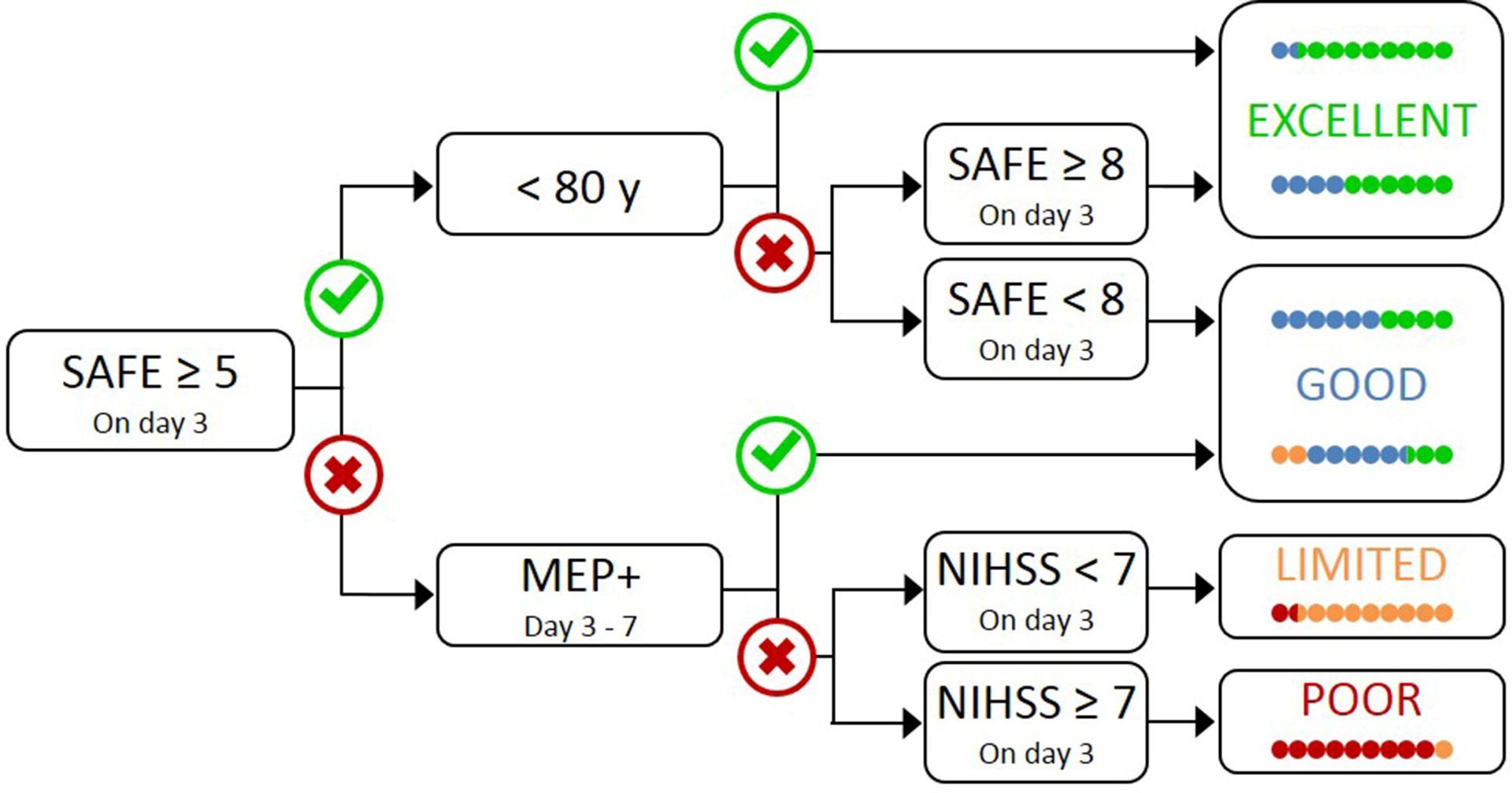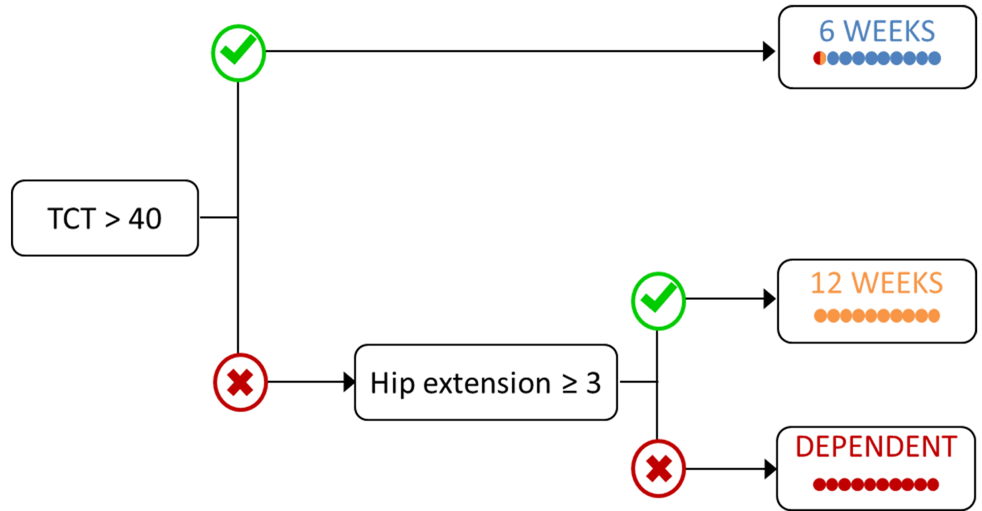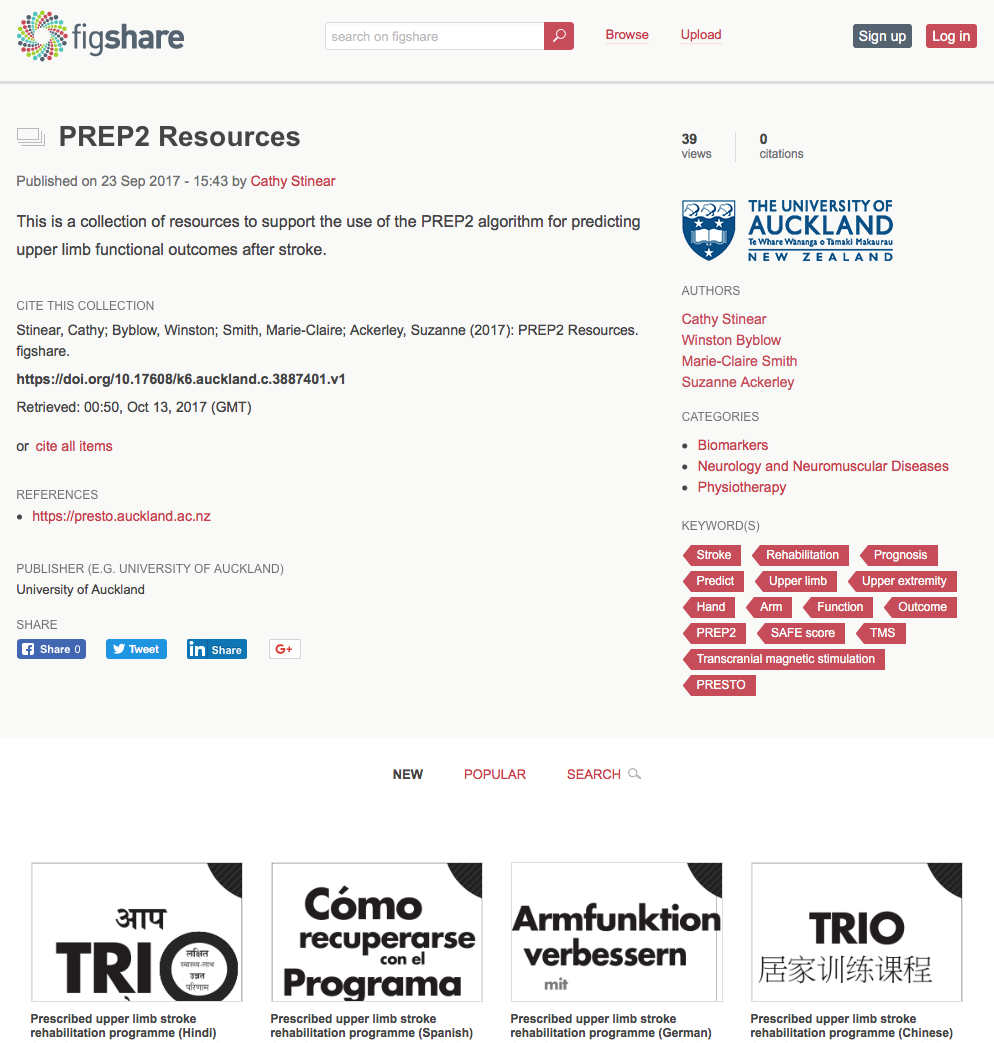
Making stroke recovery prediction tools freely available
Associate Professor Cathy Stinear, Department of Medicine
PRESTO platform and resource database
Stroke is a leading cause of adult disability worldwide. Most people who experience a stroke have weakness on one side of their body. The ability to live independently again after stroke depends largely on the recovery of strength and function on the affected side. Predicting how well someone will be able to use their hand and arm, and when they will be able to walk again, is an important but difficult task. Being able to predict recovery and outcomes allows better management of the patient’s expectations, tailoring of rehabilitation goals, and more efficient use of time and resources. However, predictions based on clinical judgement and experience are inaccurate for many patients, especially those whose movement is more severely affected. Some of these patients make a good recovery and have good outcomes, while others don’t improve at all, and it’s impossible to tell them apart when relying on clinical impressions alone.
We’ve developed two clinical algorithms to address this challenge. The first is called PREP2, which predicts how well an individual patient will be able to use their hand and arm after stroke. The second is TWIST, which predicts when an individual will regain the ability to walk independently (Figure 1). We’ve combined algorithms in a project called Predict Stroke Outcomes (PRESTO). PRESTO aims to provide online information and resources to clinicians and researchers around the world to help with the implementation of both PREP2 and TWIST in a clinical or research context.


Figure 1. An overview of the two clinical algorithms
(a) PREP2 algorithm for predicting upper limb functional outcomes after stroke.
(b) TWIST algorithm for predicting the recovery of independent walking.

Figure 2. PREP 2 Resources in Figshare.
https://figshare.com/collections/PREP2_Resources/3887401
Using Figshare and Wikispace together for PRESTO
CeR has helped us to establish PRESTO with WordPress and the University of Auckland’s Institutional Data Repository Figshare. WordPress provides us with a platform to host PRESTO and allows us to keep other groups up to date with our research, as well as explain how they can implement PREP and TWIST in a clinical or research environment.
Figshare provides a single place for us to upload all the resources related to PRESTO, and makes it easy for others to access and download these resources. Within Figshare we can easily track the impact of the resources in a real-time manner using altmetrics (alternative metrics) (Figure 2). Using WordPress and Figshare in combination makes it simple to go from finding and reading the information about PRESTO to downloading the resources.
See more case study projects

Our Voices: using innovative techniques to collect, analyse and amplify the lived experiences of young people in Aotearoa

Painting the brain: multiplexed tissue labelling of human brain tissue to facilitate discoveries in neuroanatomy

Detecting anomalous matches in professional sports: a novel approach using advanced anomaly detection techniques

Benefits of linking routine medical records to the GUiNZ longitudinal birth cohort: Childhood injury predictors

Using a virtual machine-based machine learning algorithm to obtain comprehensive behavioural information in an in vivo Alzheimer’s disease model

Mapping livability: the “15-minute city” concept for car-dependent districts in Auckland, New Zealand

Travelling Heads – Measuring Reproducibility and Repeatability of Magnetic Resonance Imaging in Dementia

Novel Subject-Specific Method of Visualising Group Differences from Multiple DTI Metrics without Averaging

Re-assess urban spaces under COVID-19 impact: sensing Auckland social ‘hotspots’ with mobile location data

Aotearoa New Zealand’s changing coastline – Resilience to Nature’s Challenges (National Science Challenge)

Proteins under a computational microscope: designing in-silico strategies to understand and develop molecular functionalities in Life Sciences and Engineering

Coastal image classification and nalysis based on convolutional neural betworks and pattern recognition

Determinants of translation efficiency in the evolutionarily-divergent protist Trichomonas vaginalis

Measuring impact of entrepreneurship activities on students’ mindset, capabilities and entrepreneurial intentions

Using Zebra Finch data and deep learning classification to identify individual bird calls from audio recordings

Automated measurement of intracranial cerebrospinal fluid volume and outcome after endovascular thrombectomy for ischemic stroke

Using simple models to explore complex dynamics: A case study of macomona liliana (wedge-shell) and nutrient variations

Fully coupled thermo-hydro-mechanical modelling of permeability enhancement by the finite element method

Modelling dual reflux pressure swing adsorption (DR-PSA) units for gas separation in natural gas processing

Molecular phylogenetics uses genetic data to reconstruct the evolutionary history of individuals, populations or species

Wandering around the molecular landscape: embracing virtual reality as a research showcasing outreach and teaching tool
























































































































































